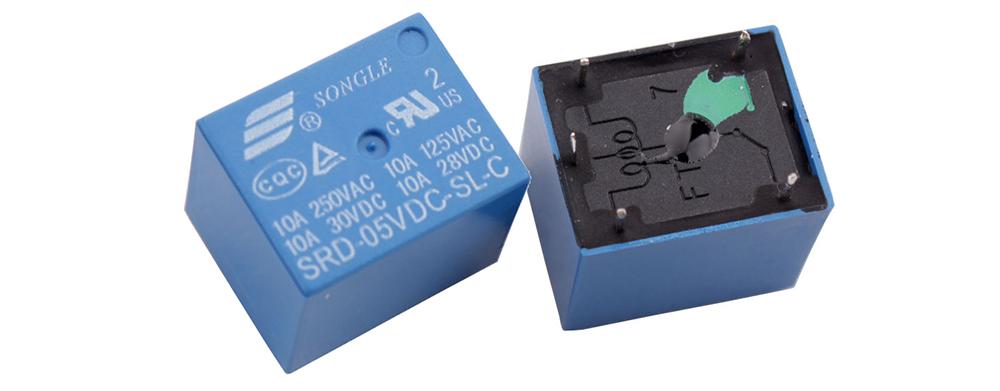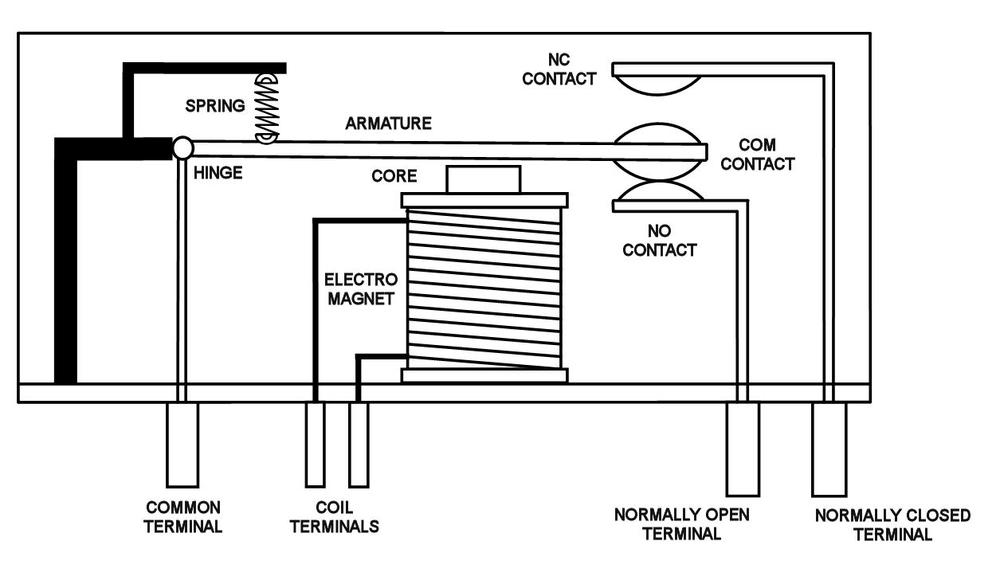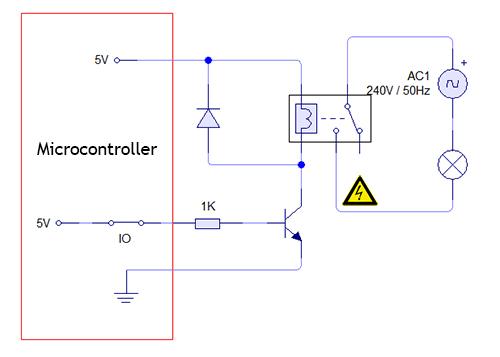How does a relay work?
Placed on Relay 5V
Relay 5V What is a Relay?
A relay is an electromagnet-operated switch that can open or close any number of switch contacts.With a relatively small voltage, a relay can therefore switch a (much) larger voltage. Relays are used, for example, to operate a large electrical device with a micro switch. Namely, the microswitch only needs to carry the current and voltage to the coil, not the large current for the switched device. As a result, the high (and possibly dangerous) voltage never reaches the switch.
 Schedule relay
Schedule relay How does a relay work?
The most important part of a relay is the coil, which creates an electromagnetic field when voltage is applied to it. This turns the relay into a switch.The electromagnetic field makes the iron core in the coil magnetic, which attracts the metal switch towards itself.
This causes the switch (connected to a 'common' terminal) to connect to one of the contacts.
When the voltage is removed again, the switch springs back to the initial contact.
How do I use a relay?
Relays are available as ready-to-use modules; a print with relays and supporting electronics that can be used immediately. When a relay has to be integrated into your own project, a separate relay is in some cases a better choice. The following points should still be taken into account:- A relay can easily ask for around 50mA, a lot of I/O is limited to 20mA, so a transistor to control the relay is desirable.
- A diode in parallel with the relay is important to dissipate the excess current when the relay is turned off. A coil holds current, which flows back into the circuit after the relay has been switched off.
 Relay example
Relay example Conclusion
A relay is a must for switching electronics that require more current or voltage than the microcontroller can supply. It also saves dangerous situations by keeping circuits separated from each other. To completely shield it, an optocoupler can be used.
A relay is a must for switching electronics that require more current or voltage than the microcontroller can supply. It also saves dangerous situations by keeping circuits separated from each other. To completely shield it, an optocoupler can be used.
Opencircuit 5V Relay 10A 5V Relay with a switching capacity of 10A. By means of a relay, a circuit with much more power (10A, 250VAC) can be switched with a relatively small current. In stock € 1,15
Opencircuit Relay module 5V 5V Relay module with optocoupler for safe control of high voltage devices. Features compact size, easy-to-use interface, handles up to 10A, plug-and-play design, and indicator light for reliable operation. Delivered in 14 to 30 days € 1,65









